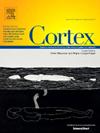感知和注意力相关大脑网络之间不同的连接模式是阅读障碍的特征:将机器学习应用于静息态 fMRI。
IF 3.2
2区 心理学
Q1 BEHAVIORAL SCIENCES
引用次数: 0
摘要
诵读困难的诊断往往发生在学龄后期,从而导致学业和心理方面的挑战。此外,诊断耗时长、成本高,而且依赖于任意的临界值。另一方面,自动算法在医疗和心理诊断方面具有巨大潜力。本研究旨在开发一种机器学习工具,根据感知和注意力基础的不同大脑网络的内在连接模式来检测儿童的阅读障碍。在本研究中,117 名儿童(8-12 岁;58 名女性;52 名典型阅读者;TR 和 65 名阅读障碍儿童)完成了认知和阅读评估,并接受了 10 分钟的静息态 fMRI 检查。264 个脑区之间的功能连接系数被用作机器学习的特征。采用不同的监督算法对存在和不存在阅读障碍的儿童进行分类。根据背侧注意力网络特征训练的分类器表现出最高的性能(准确率为 0.79,灵敏度为 0.92,特异性为 0.64)。基于听觉、视觉和前顶叶网络的分类表现出中等准确率水平(70-75%)。这些结果凸显了与视觉注意力相关的大脑网络在诵读困难儿童和TR儿童之间存在着明显的神经生物学差异。不同的神经整合模式可将阅读障碍与典型的发育障碍区分开来,这在未来可用作阅读障碍存在和/或严重程度的生物标志物。本文章由计算机程序翻译,如有差异,请以英文原文为准。
Distinct connectivity patterns between perception and attention-related brain networks characterize dyslexia: Machine learning applied to resting-state fMRI
Diagnosis of dyslexia often occurs in late schooling years, leading to academic and psychological challenges. Furthermore, diagnosis is time-consuming, costly, and reliant on arbitrary cutoffs. On the other hand, automated algorithms hold great potential in medical and psychological diagnostics. The aim of the present study was to develop a machine learning tool for the detection of dyslexia in children based on the intrinsic connectivity patterns of different brain networks underlying perception and attention. Here, 117 children (8-12 years old; 58 females; 52 typical readers; TR and 65 children with dyslexia) completed cognitive and reading assessments and underwent 10 min of resting-state fMRI. Functional connectivity coefficients between 264 brain regions were used as features for machine learning. Different supervised algorithms were employed for classification of children with and without dyslexia. A classifier trained on dorsal attention network features exhibited the highest performance (accuracy .79, sensitivity .92, specificity .64). Auditory, visual, and fronto-parietal network-based classification showed intermediate accuracy levels (70–75%). These results highlight significant neurobiological differences in brain networks associated with visual attention between TR and children with dyslexia. Distinct neural integration patterns can differentiate dyslexia from typical development, which may be utilized in the future as a biomarker for the presence and/or severity of dyslexia.
求助全文
通过发布文献求助,成功后即可免费获取论文全文。
去求助
来源期刊

Cortex
医学-行为科学
CiteScore
7.00
自引率
5.60%
发文量
250
审稿时长
74 days
期刊介绍:
CORTEX is an international journal devoted to the study of cognition and of the relationship between the nervous system and mental processes, particularly as these are reflected in the behaviour of patients with acquired brain lesions, normal volunteers, children with typical and atypical development, and in the activation of brain regions and systems as recorded by functional neuroimaging techniques. It was founded in 1964 by Ennio De Renzi.
 求助内容:
求助内容: 应助结果提醒方式:
应助结果提醒方式:


